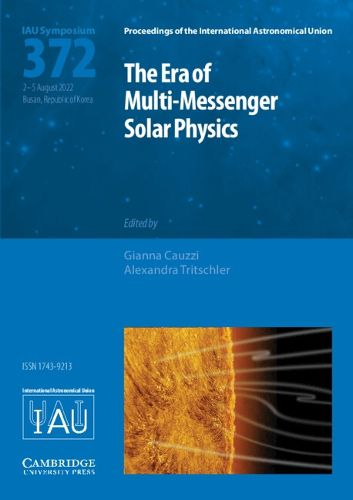Readings Newsletter
Become a Readings Member to make your shopping experience even easier.
Sign in or sign up for free!
You’re not far away from qualifying for FREE standard shipping within Australia
You’ve qualified for FREE standard shipping within Australia
The cart is loading…






Multi-messenger science has a long history in solar astronomy, as direct measures of "in-situ" particles emanating from the Sun, like the solar wind, have long been used alongside remote observations to shape our understanding of the heliosphere. Still, the recent advent of several major observational facilities, such as Parker Solar Probe, Solar Orbiter, and the Inouye Solar Telescope, among many others, is now heralding an exciting new era of scientific opportunities within multi-messenger solar physics. This volume collects the proceedings of IAU Symposium 372 held during the XXXIst IAU General Assembly in Busan, Republic of Korea. Its main goal is to highlight how these facilities can address many of the pressing questions facing contemporary solar physics, with a special emphasis on their coordinated operation and the resulting synergies. Graduate students and researchers in solar physics will benefit from the many new results presented within.
$9.00 standard shipping within Australia
FREE standard shipping within Australia for orders over $100.00
Express & International shipping calculated at checkout
Multi-messenger science has a long history in solar astronomy, as direct measures of "in-situ" particles emanating from the Sun, like the solar wind, have long been used alongside remote observations to shape our understanding of the heliosphere. Still, the recent advent of several major observational facilities, such as Parker Solar Probe, Solar Orbiter, and the Inouye Solar Telescope, among many others, is now heralding an exciting new era of scientific opportunities within multi-messenger solar physics. This volume collects the proceedings of IAU Symposium 372 held during the XXXIst IAU General Assembly in Busan, Republic of Korea. Its main goal is to highlight how these facilities can address many of the pressing questions facing contemporary solar physics, with a special emphasis on their coordinated operation and the resulting synergies. Graduate students and researchers in solar physics will benefit from the many new results presented within.